When the United Nations Food and Agriculture Organization (FAO) announced last October that it planned to build closer ties with CropLife International, the trade body of the pesticide industry, civil society and environmental organizations jumped into action. Eleven international organizations sponsored a letter to the Director General of the FAO that opposed the announced partnership. It was signed by 352 civil society and indigenous organizations from 63 countries, and was accompanied by a letter of support from nearly 300 academics and scientists. Seed the Commons, the organization that I co-founded and that opposes the corporate takeover of food systems, signed on.
Then the United Nations convened the UN Food Systems Summit for September 2021, and it became evident that despite last year’s outcry, the UN’s alliances with the private sector were deepening and that they would be putting forth corporate false solutions rather than the People’s solutions we urgently need. Around the world, activists decided to boycott the summit (read Here is why we are boycotting the UN Food Systems Summit by two peasant leaders). The pre-summit that took place last July was met with mass mobilizations, both online and in person. Again, Seed the Commons threw our hat into the ring.
We decided to opt out of the UN Food Systems Summit’s mechanism for input from civil society and instead to join others in organizing around our opposition and building more legitimate platforms to discuss the transformation of our food systems. In response to the UN Food Systems Pre-Summit that took place in July, we participated in the Global Virtual Rally Against the Corporate Capture of Food Systems, a day of political and artistic interventions that kicked off a week of global mobilizations. The pushback is already bearing fruit; we are seeing the crumbling of the legitimacy of the UN Food Systems Summit. The International Panel of Experts on Sustainable Food Systems has notably withdrawn from the summit, stating “The world urgently needed a food systems summit, but not this Summit”.
I am happy for the small part I played in this, but the true extent of industry ties of the UN is still not sufficiently appreciated and challenged. Last year’s announced partnership between the FAO and Croplife made waves, but it was not the first time the FAO has prioritized industry ties over the health of people. The United Nations, through the FAO and other agencies, has a long history of propping up the dairy industry. Unlike with pesticides, the innocuous – haloed even – reputation of milk has meant that this has largely gone unchallenged.
The ties between the United Nations and the dairy industry go almost as far back as the founding of the United Nations itself; more specifically, to the founding of the United Nations Children’s Fund (UNICEF). Today UNICEF is known as the UN agency that oversees child-related programs and advocacy, but at its start, its mandate was much narrower. Originally named the United Nations Children’s Emergency Relief Fund, UNICEF was created at the first United Nations General Assembly to provide emergency relief (specifically milk, vitamins and cod-liver oil) to children in war-torn Europe. Milk distribution was so synonymous with the work of UNICEF that its first logo was a child drinking milk over the map of the world, and at the time it was nicknamed a “giant organizational udder”. Another common nickname was “milkman of the world”, and UNICEF not only distributed milk but helped rebuild – and sometimes simply build – the infrastructure that allowed local communities to have access to milk. While its initial focus was on Europe, this quickly expanded to the rest of the world, starting in Asia. Milk consumption is not traditional to most of the places targeted by this expansion, so it was no longer a question of rebuilding what had been lost through war but of bringing in something entirely new, which tied into the developmental focus that the United Nations would start to adopt.
Food assistance programs hold the appeal of wholesome, altruistic giving, but their reality is usually more complex. These programs are often donor-based, i.e., organized around the benefit of donors rather than recipients. The first way that food aid benefits donors is by creating an outlet for their products. This short-term benefit can then become long-term, as the effective dumping of foodstuffs can help dismantle local food systems and shift dietary habits, creating new markets for donors and helping to integrate local food systems into the global food regime. The case of milk is no different. Distributing milk to school children provides a direct outlet for milk producers and others involved in milk distribution. In the days of the “giant organizational udder”, skim milk purchased by UNICEF was sourced from American farmers, who were provided an immediate outlet for their surplus stock. From the standpoint of industry growth, children are the ideal recipients of food assistance programs. They are the easiest leverage point over a society’s food culture, as their tastes and habits are still to be formed. And in effect, food cultures have shifted drastically since the early days of the UN and the targeting of children has been a key strategy in making this happen.
It is common knowledge that food systems and cultures have undergone westernization and globalization over the past century, but an oft overlooked part of this has been the globalization of milk consumption. We don’t tend to think of this in the same way that we do the wholesale adoption of pizza, burgers and processed foods, but for many populations it constitutes no less an adoption of Western norms. And more so than fast-food and processed foods, dairy has benefitted from government support and subsidies. The regular marketing of dairy has been compounded by its de facto imposition in children’s daily lives.
A key driver of the globalization of milk consumption has been the creation of school milk programs, which are typically based on some sort of public-private partnership. Parties involved usually include schools, governments and producers, and often also international development agencies, NGOs and multinationals such as Nestlé, Danone and Tetra Laval. Predictably, school milk programs are beneficial to their suppliers. Today in the United States, milk must be served with school lunches for these to be eligible for reimbursement by the USDA, which forces the public school system into a primary outlet for the American dairy industry.
The beneficiaries of these programs are not only dairy farmers but all of those along the supply chain–especially the multinationals that have vertically integrated the supply chains. One of the main players in the global school milk industry is Tetra Pak, which produces packaging for milk cartons. Tetra Pak’s website proudly features the school milk programs they help start in the Global South; they get to sell their products and look like good Samaritans too.
So the short term benefits for the dairy industry are obvious, but the long term impacts are perhaps more important, especially in emerging markets. The food preferences and habits of children have yet to be formed; feeding them milk every day serves to create consumers for the future. The explosion of school milk programs of recent decades has largely taken place in countries and populations with very little prior milk consumption. Serving milk in school normalizes milk consumption, instills the notion that it is a default or even necessary part of a healthy diet, and in effect, can change a food culture in one generation.
Since its foray into milk distribution in its early days, the UN has continued to be a broker for the dairy industry. In more recent years, the FAO has played a key role in supporting what has become a veritable global school milk industry. The logistical support and legitimacy that it provides has increased the access of the dairy industry to a captive consumer base: children.
In 2000, the FAO founded World School Milk Day, which takes place every last Wednesday of September. For one day, with little cost to the dairy industry, schools around the world sing the praises of milk to children. It is celebrated in a growing number of countries every year and is basically a global public relations day. Activities vary but they all highlight the purported benefits of milk, aim to build enthusiasm among children and legitimize the notion of serving milk through schools. In sum, the FAO created a whole “World Day of” to celebrate an institution the purpose of which is to instill habits in children that line the pockets of the dairy industry. Other ways that the FAO has supported the expansion of school milk programs have included helping to organize the International School Milk Conferences and the facilitation of communication among school milk stakeholders.
The perception of milk as children’s food par excellence is becoming universal, but milk was not in fact part of the dietary habits of much of humanity until very recently. The spread of this Western dietary norm has been aided by the marketing of milk as something that is not merely healthy, but necessary to children’s growth and development. The notion of necessity carries with it the belief that a diet without milk – even if varied and calorically sufficient – can only be considered lacking. The association between milk consumption and Western, American or white people is further encouragement to feed children milk, so that their groups can grow to be as strong, tall, successful or developed as those of traditional milk drinkers.
Unlike other Western foods that have gone global, milk is uniquely perceived as key to proper development. This is why it can attract subsidies through food assistance programs rather than depending solely on regular private marketing channels. But the notion that milk is necessary for the development of healthy children should raise the question: how were children from non-milk drinking cultures managing to grow up before?
The sense of necessity that has been ascribed to milk both stems from and propagates Eurocentrism. And by instilling the notion that a diet without milk is nutritionally incomplete, children and their parents are being taught to forget and devalue the diversity of foods from the food cultures they come from–at the same time that these are being lost under the expansion of a globalized corporate food regime. If a diet without milk as lacking, then many traditional non-Western diets are inherently deficient. This is a message that is repeatedly conveyed in the marketing of milk to children.
Eurocentrism recasts not only how we read human cultures but also human bodies. People who are from non-milk drinking cultures are majority lactose intolerant, meaning that they cannot easily digest milk or most dairy products. While this is not a pathology, it is often perceived as such. Indeed, lactose intolerance is the default condition of most humans and mammals. As mammals, we produce the enzyme lactase to aid in the digestion of lactose that we get from our mother’s milk. Lactase production drops after weaning for those who are lactose intolerant, but among humans, some populations developed dairying and in those groups lactose tolerance became an important trait to pass on. Over time, these populations became majority lactose tolerant (or lactase persistent, as they continued to produce lactase past the age of weaning), but they remain the deviation from the norm at the level of our species. Lactose intolerance is normal and healthy, but it has been pathologized due to a Eurocentric view that is now being exported.
The pathologization of lactose intolerance, coupled with the marketing of milk as necessary, imply that when someone in Mexico or China or Vietnam or any of the emerging markets for dairy experiences gastrointestinal distress upon consuming milk, the problem is perceived to be the person, not the product they ingested. Painting diets without milk as deficient goes along with seeing bodies that can’t digest milk as defective. And because milk is deemed necessary, the “defect” of lactose intolerance has to be overcome or bypassed in some way–the solution can’t be to simply go without. Lactose intolerant people are commonly told that rather than ditch dairy, they should work around their impediment, for example by attempting solutions like drinking lactose-free milk, eating cheese (which has less lactose than milk), taking lactase pills, drinking smaller but more frequent portions of milk, and otherwise trying to build up their tolerance.
Let’s state some facts. Milk is not a healthy food, much less a necessary one. Its consumption is associated with higher rates of heart disease, diabetes and certain cancers. There is not a single nutrient in milk that cannot be easily found in other food sources. The dairy industry has been so effective in marketing milk for its calcium content that it is now commonly believed that milk is the only food source of calcium, or that dairy-free diets require supplementation or special planning to avoid being deficient. This could not be further from the truth. The website World’s Healthiest Foods, which has no vegan or anti-dairy agenda (and includes dairy in their lists of healthiest foods), lists tofu first of their top 10 “healthiest foods rich in calcium”. The diverse food cultures of this world are replete with calcium-rich foods, but they are erased or their importance downplayed by the one-size-fits-all approach to child nutrition of the school milk industry. At the same time, the biodiversity of our food systems – and by extension our diets – is being lost as they are integrated into a global corporate food regime.
In an article titled Is the FAO in the pocket of the pesticide industry?, Pesticide Action Network director Keith Tyrell wrote “This new deal would turn FAO into the marketing arm of the pesticide industry.” It is not a stretch to say that the FAO is already the marketing arm of the dairy industry.
All children are harmed by school milk programs, but children who are from majority lactose intolerant populations are harmed the most. Rather than advocate for the nutritional needs of children to be met with foods that are healthy, diverse and culturally appropriate, the FAO is backing up industry at the expense of eaters. That these eaters are amongst the world’s most vulnerable makes this reversal of priorities all the more egregious.
Last year, civil society responded swiftly to the announcement of the partnership between the FAO and CropLife because many of us immediately understand that such a partnership is a problem. The alliances with the dairy industry are more surreptitious and have gone virtually unchallenged because milk is so widely perceived as healthy, necessary and wholesome. But these perceptions are the result of Eurocentrism and industry propaganda, and it’s time they be updated. It’s also time that we demand that the UN stop propping up the dairy industry, starting with the role of the FAO in the expansion of school milk programs.
Readers might be thinking that the comparison between FAO’s involvement in school milk and its partnership with CropLife is unwarranted because in the case of the former, small farmers are being supported. But the main beneficiaries of school milk programs are multinationals, and even if they were small farmers, supporting them should not come at the expense of children’s health.
In my video intervention at the Global Virtual Rally to Transform Corporate Food Systems last July, I spoke of how corporate capture is aided by a narrative of lack. By painting a scarcity that doesn’t truly exist, or at least not by default, corporate actors sell us false solutions – like GMOs – to the false problems they have created. The marketing of milk follows the same playbook and further entrenches the power of multinationals and aids in the dismantlement of local food systems.
I also spoke of reclaiming sovereignty and building a People’s food system by putting forth our own narrative: one of abundance. They say that we can’t feed the planet unless they save us with their GMOs? We show that there is already more than enough food to feed every human alive and that small farmers are producing most of it. In my work with Seed the Commons, we did the same with milk. The dairy industry has erased the numerous foods that contribute calcium and protein to children’s diets, and convinced us that without their product, kids can’t grow or thrive. Like capitalists always do: they create the problem, whether material or perceived, and then sell us the solution. Part of countering this is to show that the problem is bogus.
On the last Wednesday of September 2017, Seed the Commons held a counter-celebration, probably the only event to have ever been held in opposition to the widely celebrated World School Milk Day. What we celebrated instead were the diverse food cultures of the world and the plant-based, calcium-rich foods that have nourished generations of children, especially those of some of the main populations that make up our city. We also launched our Get Milk Out campaign, which aims to get the SF Board of Education to pass a resolution opposing mandatory school milk, and to inspire and inform similar activism globally.
This year, World School Milk Day will fall on Wednesday September 29, less than a week after the UN Food Systems Summit on September 23. The announcement they sent out last month with the date and registration details was unironically titled “The ‘People’s Summit’ has arrived!”. (1) But the legitimate people’s summit – the Global People’s Summit on Food Systems – is being held separately on September 21-23.
Opposition to the UN Food Systems Summit and to World School Milk Day are pieces of the same pushback against the corporate takeover of food systems. I invite more activists to take a more far-reaching approach to food system change, which for many will require a willingness to rethink the role of foods and industries towards which they might hold a positive bias. It’s time to say no to the top-down imposition of milk on the children and food systems of the world. People are organizing outside of corporate-captured UN channels to put forth legitimate pathways towards abundance and resilience; we can further defend biological and cultural diversity by bringing back and reasserting the importance of the plethora of foods other than milk that have fed generations. Let’s reclaim the abundance that has been erased by corporate narratives, including that of the dairy industry.
(1) Learn more about what’s wrong with the UN Food Systems Summit and with calling it a “people’s summit” at this excellent site.
The participation in the mobilization against the UNFSS was the last project I took on before leaving my role of director of Seed the Commons this summer. This article first appeared on seedthecommons.org/blog.

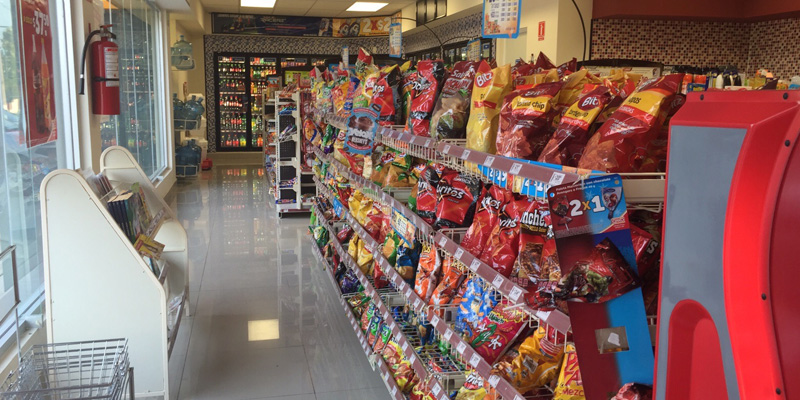
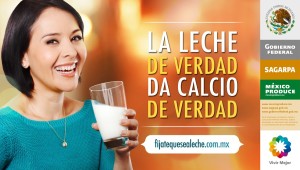
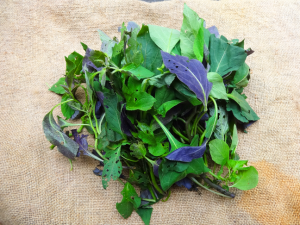

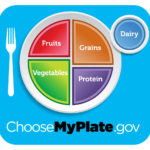

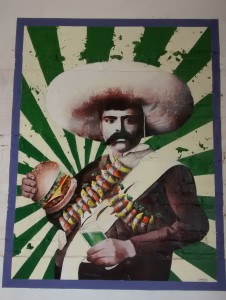 I met a vegan couple, one of them from Mexico and the other from the US, at Te Quiero Verde, a vegetarian restaurant with this awesome mural. The American has been involved in animal rights and other activism since the 90s. Upon hearing about my project, he told me the following story about the effects of food aid in Haiti, where he worked for several years.
I met a vegan couple, one of them from Mexico and the other from the US, at Te Quiero Verde, a vegetarian restaurant with this awesome mural. The American has been involved in animal rights and other activism since the 90s. Upon hearing about my project, he told me the following story about the effects of food aid in Haiti, where he worked for several years.